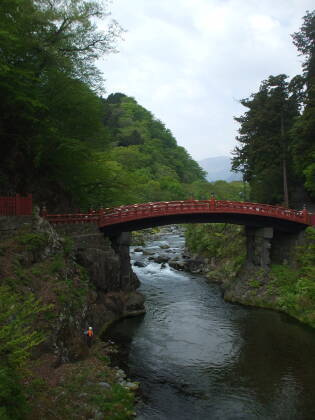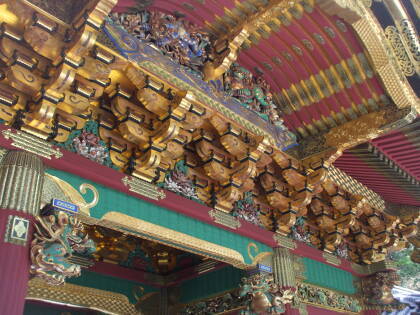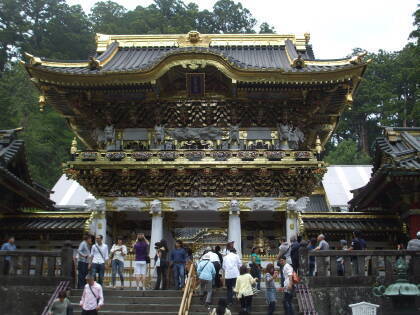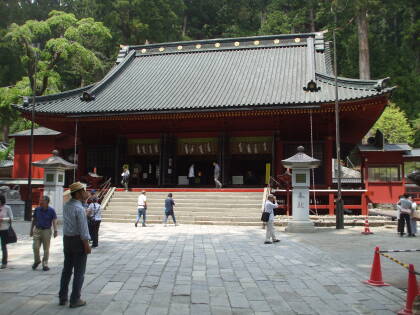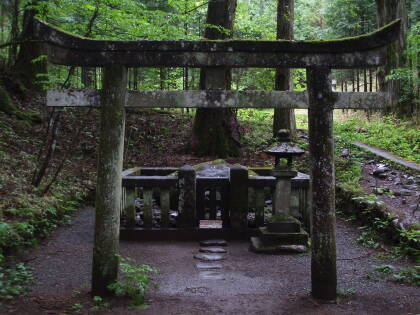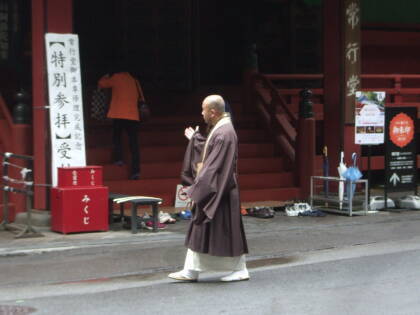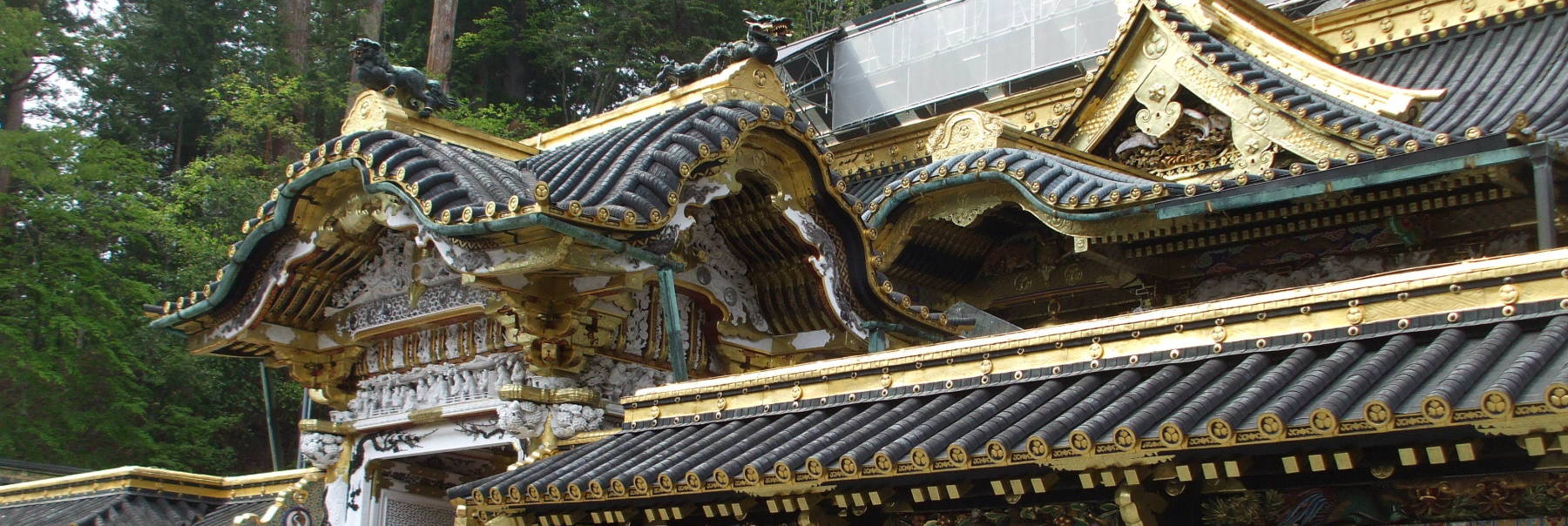
Nikkō
Visiting Nikkō
We're on the way to Nikkō. It's a city of about 84,000 in Tochigi Prefecture, north of Tōkyō. It's home to a shrine and the tomb of Tokugawa Ieyasu, one of Japan's most influential rulers. He was a shōgun, a military leader; the Emperors stayed in the palaces in Kyōto for centuries while the shoguns really controlled the country.
Shintō andBuddhism
in Japan
The shoguns were Buddhist, while the Emperors followed Shintō, which says that the Emperors are descendants of the gods.
However, the shoguns had themselves enshrined in Shintō shrines, where they were considered kami or spirits inhabiting the shrines. Nikkō also contains the Futarasan shrine, one of the older Shintō shrines in Japan, dating to 767.
There's a Japanese saying: "Never say kekkō until you've seen Nikkō." The joke is that kekkō means "beautiful", "magnificent", or "I am satisfied".
There are spectacular sights in Nikkō. Here is the Tōshō-gū, the shrine to Tokugawa Ieyasu.
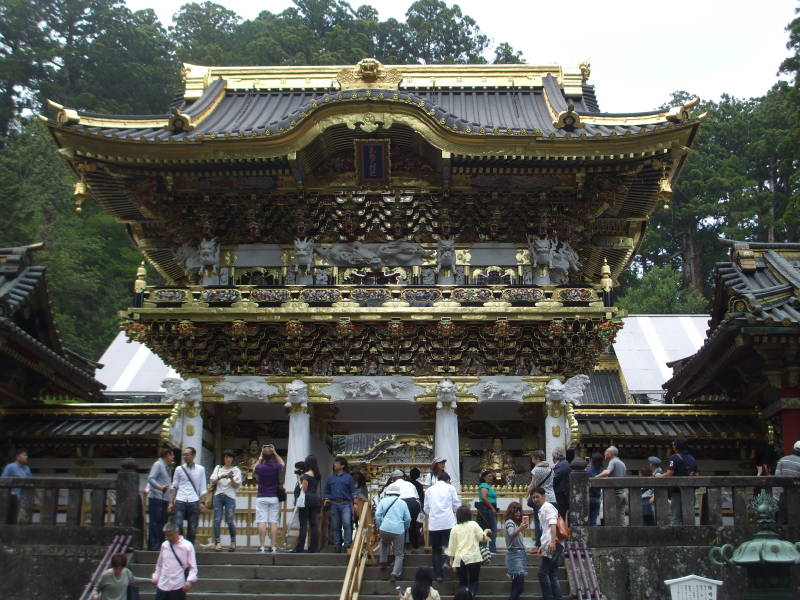
Nikkō is at the end of railway lines leading into the mountains. It's not on the way to anywhere. The high-speed Shinkansen trains don't come close to Nikkō.
Asakusa
I got tickets on the Tobu Line at the train station in Asakusa.
The schedule looked way too tight. One-minute changes from one train to the next at Hikifune and again at Minami-Kurihashi, then a leisurely 8-minute change at Shin-tochigi. But these are Japanese trains, they arrive and depart within seconds of the scheduled time.
| From | Leave | Arrive | To |
| Tōkyō Asakusa | 1702 | 1707 | Hikifune |
| Hikifune | 1708 | 1806 | Minami-Kurihashi |
| Minami-Kurihashi | 1807 | 1847 | Shin-tochigi |
| Shin-tochigi | 1855 | 1952 | Tobu-Nikko |
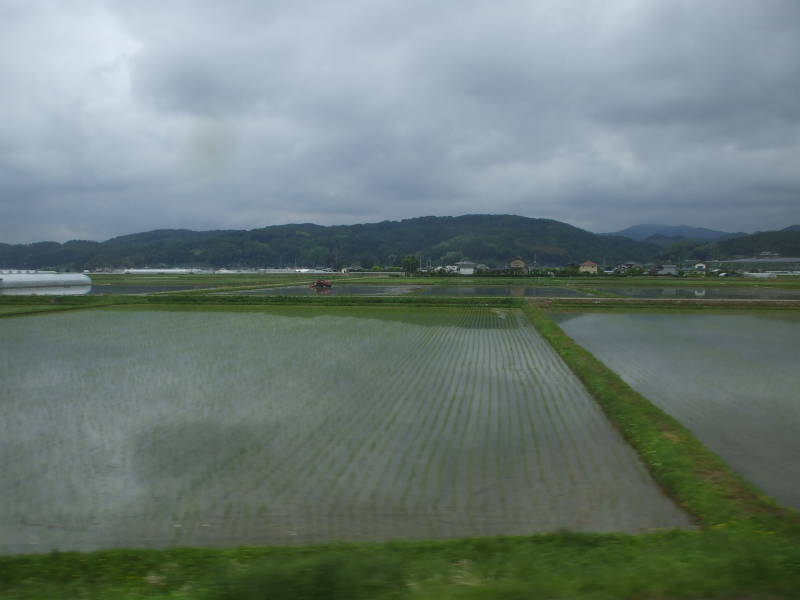
Japan is largely mountainous. Almost all potential farmland is planted.

There are narrow divisions between rice paddies. Homes and roads have only very narrow margins between them and the paddies or fields.
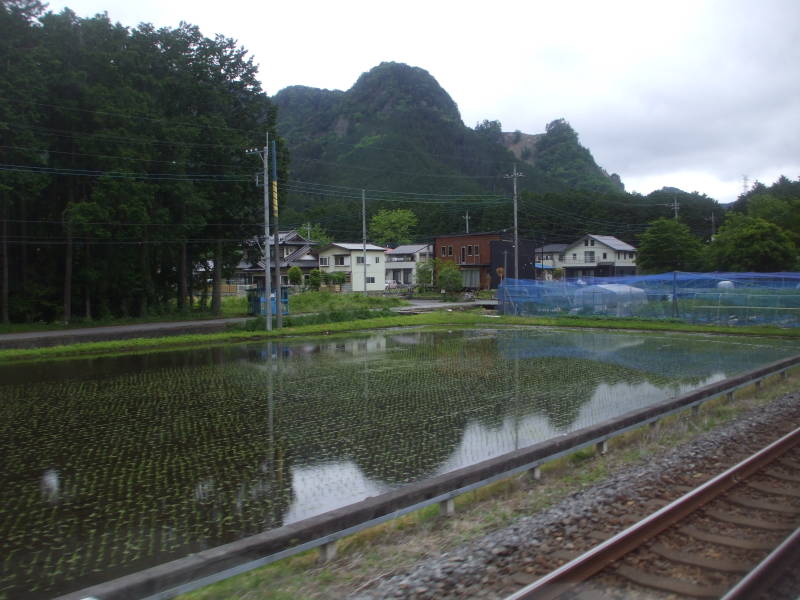
Despite there being no railings and only very narrow margins between the roads and the rice paddies, you never see a car that has gone off the road.
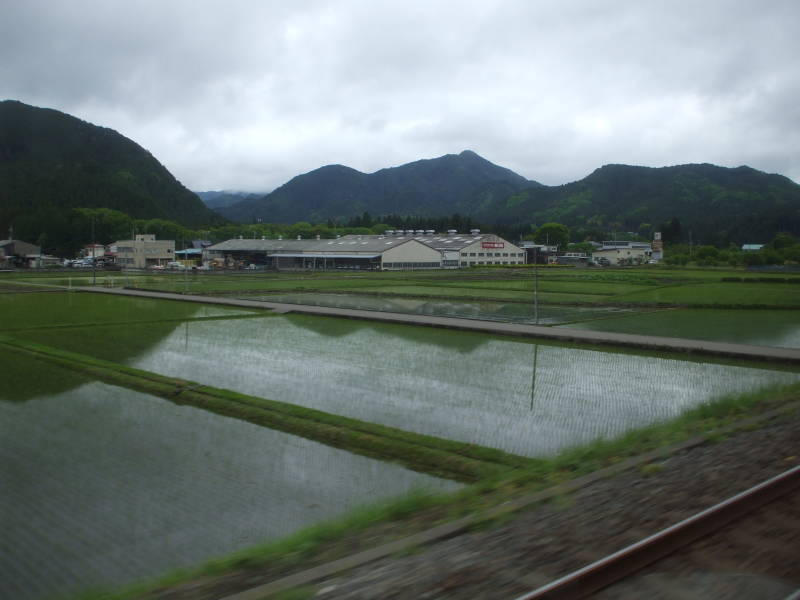
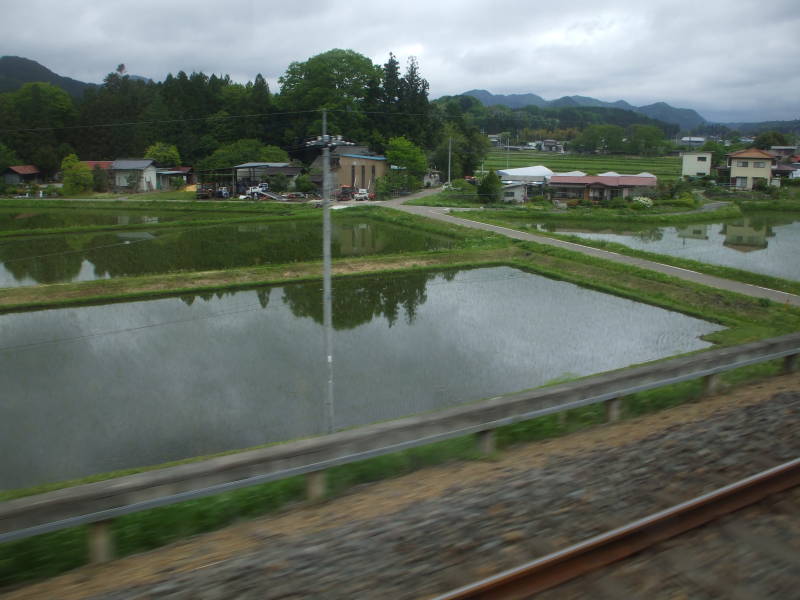
The rail lines run almost parallel to the mountains, only gradually getting into rougher terain.
Elevations around Nikkō range from 200 to 2000 meters.
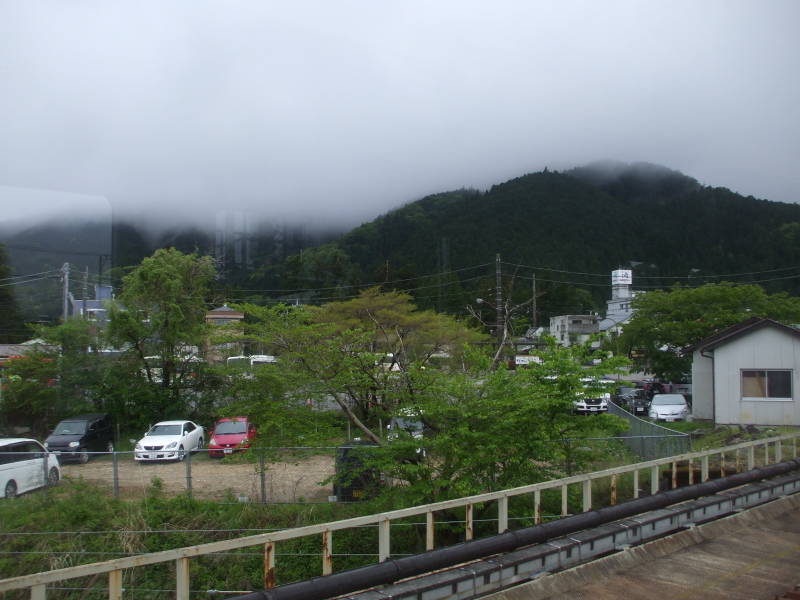
Walking Through Nikkō
There are both Tobu line and JR line stations in Nikkō, within a block of each other.
I'll walk northwest up the main street from the Tobu line station through Nikkō.
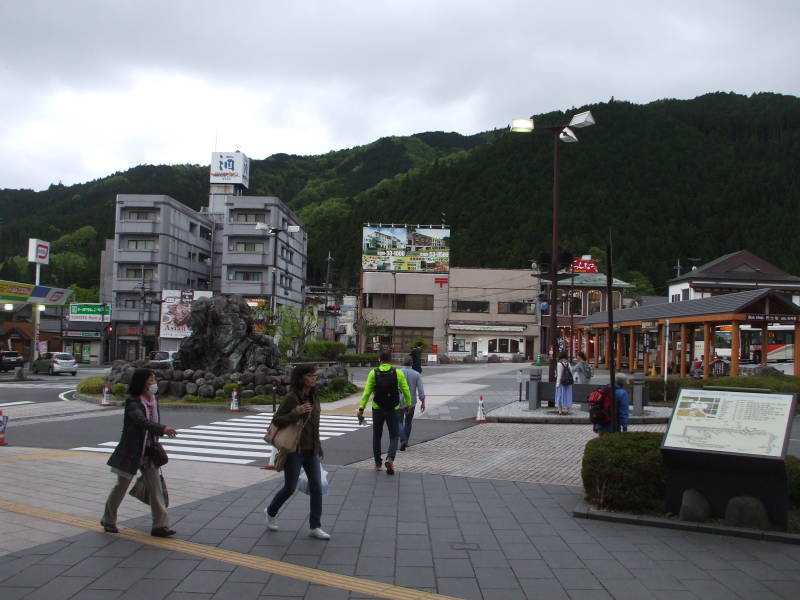

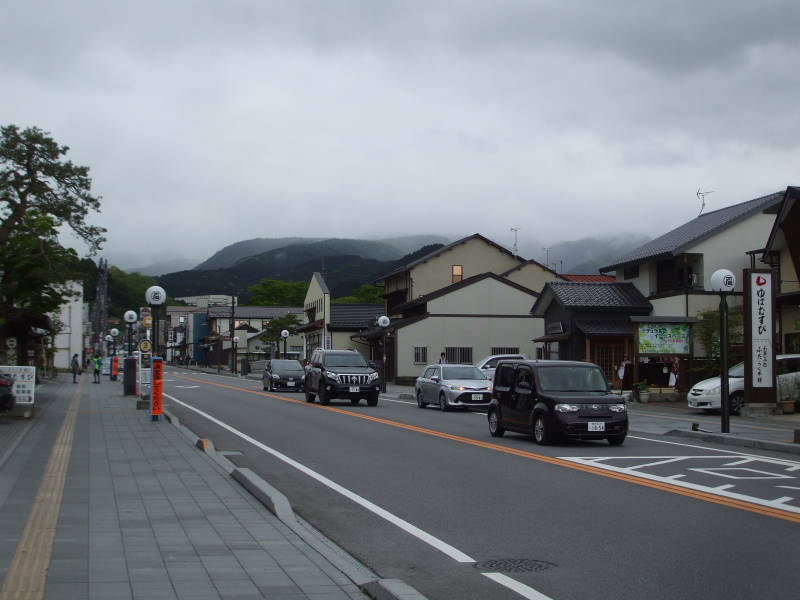
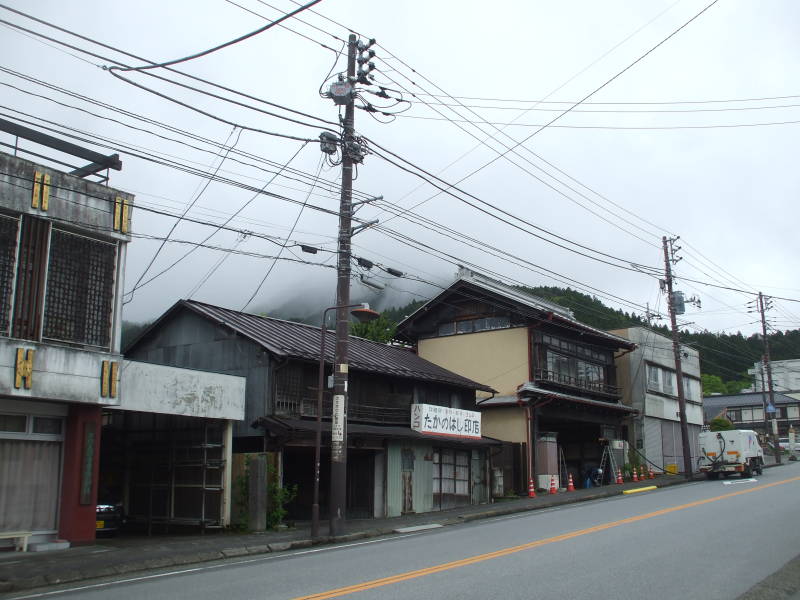
I have arrived at my destination, the Nikkōrisou Backpackers hostel. It's about 1.5 kilometers from the Tobu station, along the Daiya river. Walk up the main street almost to the bridge over the river, then turn sharply to your right and back.

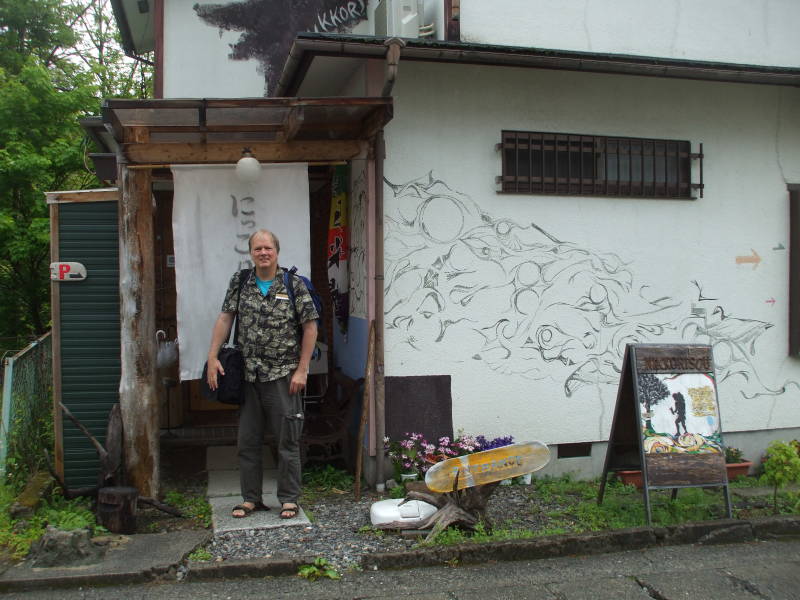
My hosts await me!
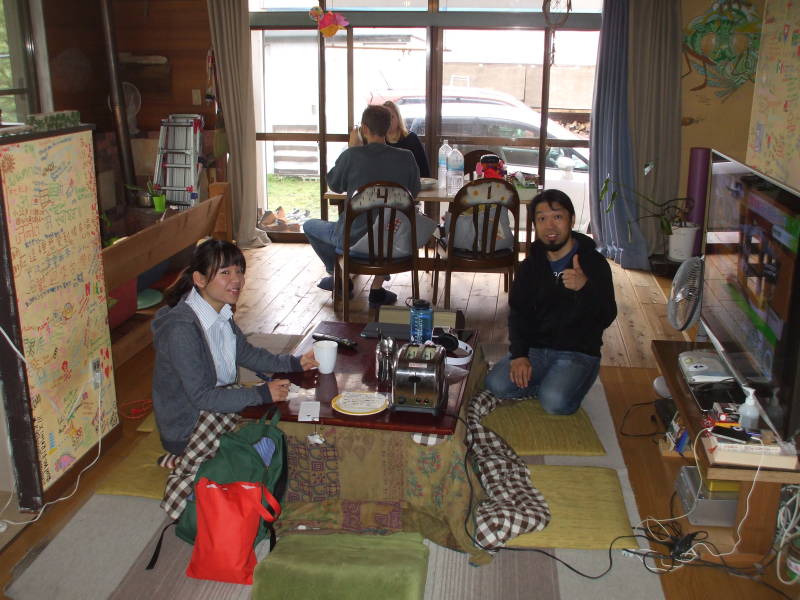
Shinkyō Bridge
The Shinkyō Bridge is just up at the next corner. Shinkyō means "sacred", it's the traditional entrance to Nikkō's district of temples and shrines.
The high priest Shōdō, the founder of the Rinno-ji temple complex, arrived here with his disciples in 766. They wanted to climb Mount Nantai to pray for Japan's prosperity. The legend says that Shōdō had noticed four strange-looking clouds rise from the earth to the sky. He soon found the path forward blocked by a river. He prayed for some means to continue, and the god Jinja-Daiou appeared as a gigantic figure clad in blue and black robes, with a necklace of skulls. Jinja-Daiou called out, "I will help you as I once helped Hiuen." He then threw two large blue and green snakes across the river. The snakes tangled with each other and formed a bridge, allowing Shōdō and his group to cross.
The first solid bridge was built here in 808. A version of the current bridge was built in 1636. It was washed away by a flood in 1902. What you see today was built in 1904.
We're looking to the west, up the river into the mountains. The main sights of Nikkō are to our right, the train stations are off to our left.
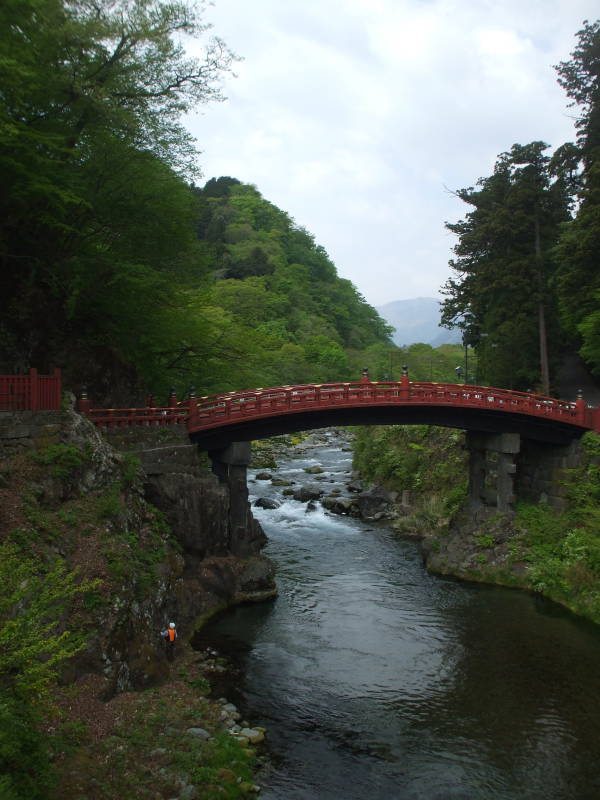
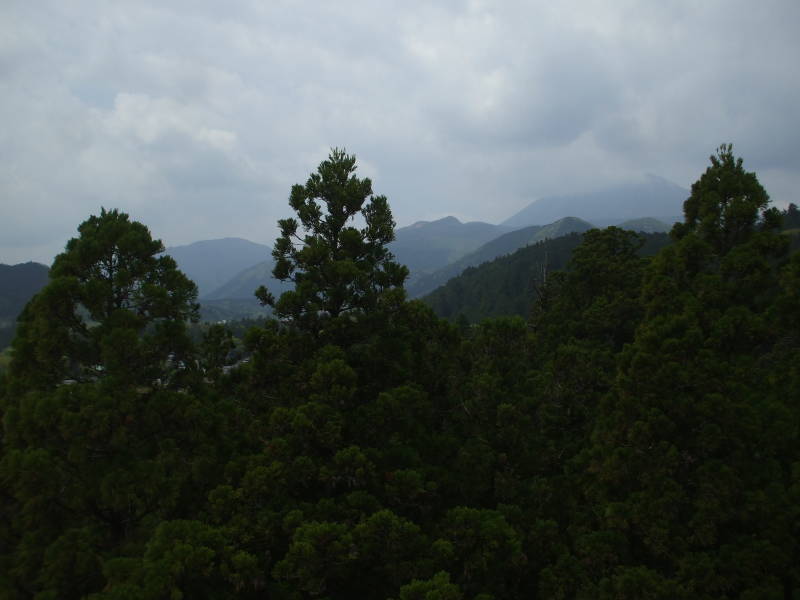
Meals in Nikkō
Tofu is made from soy beans. First they soak and grind soy beans, boil the mixture, and filter out particulates. That produces soy milk, a stable emulsion of oil, water, and protein. The soy milk is then coagulated into curds, which are pressed into blocks.
Yuba or tofu skin results by boiling soy milk and removing the resulting skin that forms. Rolls of tofu skin are a specialty in Nikkō.
Here's lunch in Nikkō — buckwheat soba noodles with tofu skin both rolled and loose, pickles, and green tea. Plus, of course, an oshibori, the wet hand towel provided with every meal.

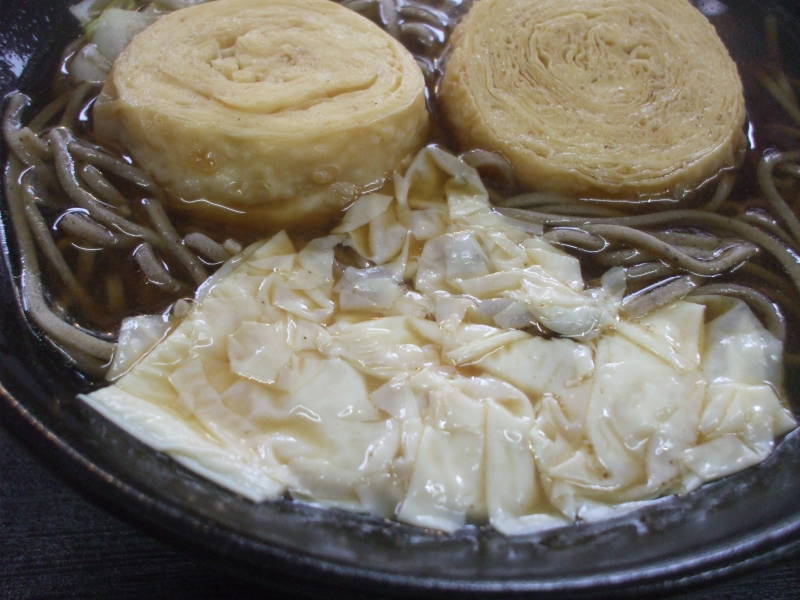
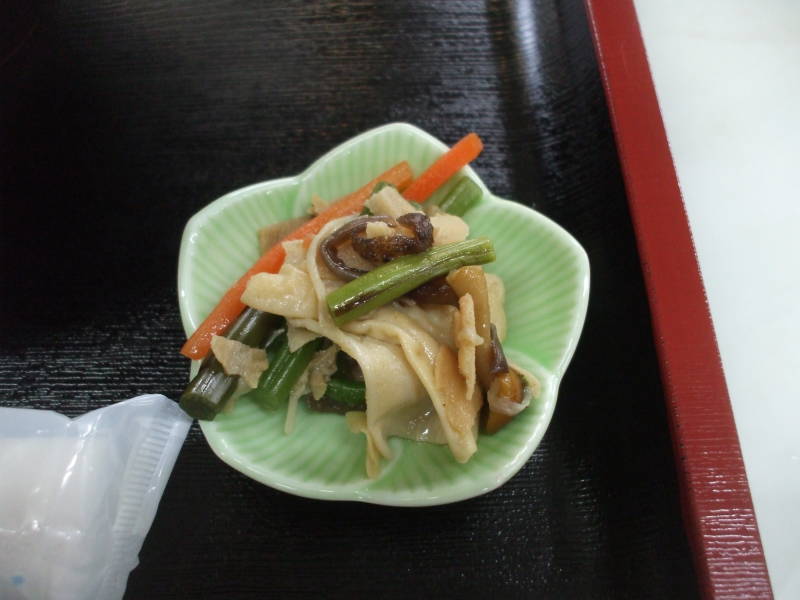

Here's lunch on another day. Omeru or an omelet, soup, pickles, and green tea.
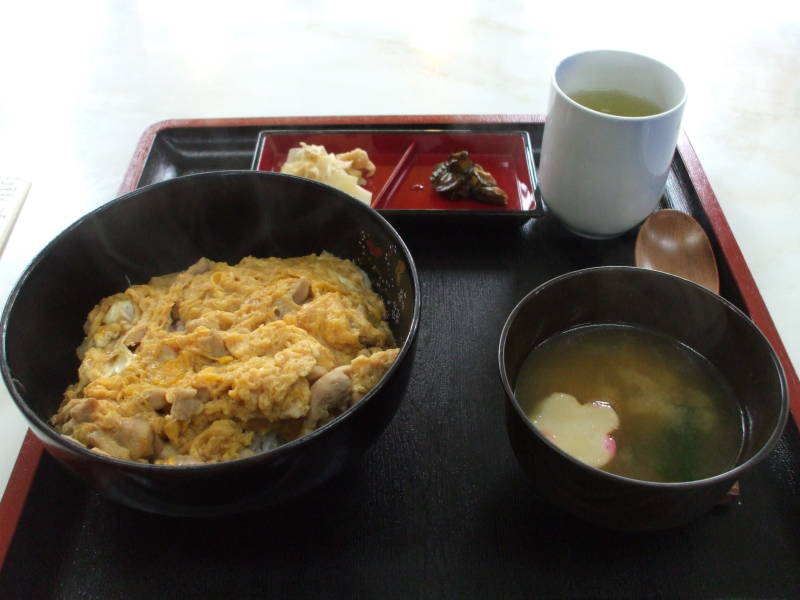
We're settled into Nikkō, let's see the sights!
Choose your next stop around Nikkō:
Or, somewhere else around Japan:
